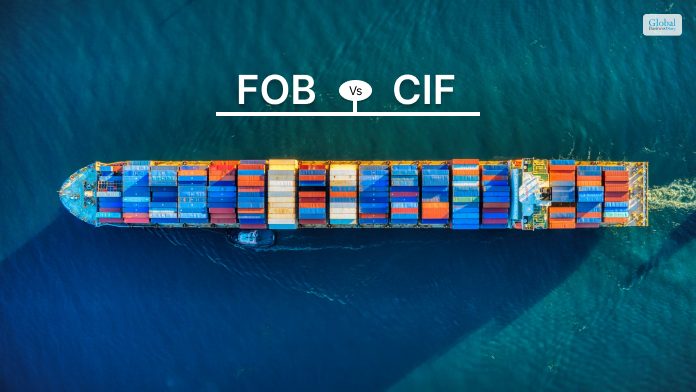What Is Sellers Concession? How To Get Sellers Concession

At the time of buying and selling, the home sellers concession can be of great help to you. It can sweeten the deal and sometimes can help to speed up the sales process. You need to know the facts well while attaining your requirements with ease.
There are some of the downsides as well for sellers’ concessions. A seller’s concession is also known as a seller contribution or seller assist. It is a real estate agreement where the seller agrees to pay certain closing costs on behalf of the buyer.
Closing costs are fees and expenses associated with the purchase of a home that goes beyond the property’s purchase price. These costs may include items such as loan origination fees, title insurance, appraisal fees, and other miscellaneous charges.
What Is A Sellers Concession?

A seller’s concession, also known as a seller contribution or seller assist, is a real estate agreement. Here the seller agrees to pay certain closing costs on behalf of the buyer. Closing costs are fees and expenses associated with the purchase of a home that go beyond the property’s purchase price.
How Seller Concession Work?

There are certain steps using which the seller concession works. You need to get through the steps to have a better idea of it. Some of the core steps of it are as follows:-
1. Negotiation
During the negotiation phase of a real estate transaction, the buyer may request a seller’s concession to help cover some of the closing costs. You can seek the help of strategy consultant.
2. Agreement
If both parties agree to the concession, the specific terms (such as the percentage or a fixed amount) are outlined in the purchase agreement.
3. Closing
At the closing of the real estate transaction, the seller contributes the agreed-upon amount towards the buyer’s closing costs. The funds are usually transferred to an escrow account and applied to the buyer’s closing costs.
What Sellers Concession Cover?

There are certain things that the sellers concession covers. You need to know the facts well while attaining your requirements with absolute ease. Some of the essential factors that you must know are as follows:-
1. Loan Origination Fees
Charges starting from the lender for processing the mortgage loan. It will help to process the loan faster than usual. You need to take care of the facts perfectly while attaining your goals with complete ease. Net operating income can be easy to calculate here.
2. Appraisal Fees
The cost of developing the property’s value. Application of the appraisal fees can make things easier and effective for you in all possible manner. Ensure that the scope of irregularities is as low as possible from your counterpart.
3. Title Insurance
Insurance that protects the buyer and lender against defects in the title. The application of title insurance can make things easier for you to attain your goals with absolute clarity. Ensure that you follow the process with ease.
4. Escro & Settlement Fees
Fees associated with the escrow process and the settlement of the real estate transaction. The settlement of the real estate transaction will make things easier and perfect for your business to grow at a rapid rate. Try out the best options that can make things perfect for your counterpart.
5. Home Inspection Cost
Fees for professional home inspections. The chances of the home inspection cost can be less than your counterpart. You need to get things to work as per your choices. Effective planning can help you in reaching your objectives with ease.
6. Recording Fees
Charges for recording the new deed and mortgage with the appropriate government office. It is one of the fundamental aspects that you need to take care of the facts. While achieving your requirements with ease, things are going to be easier. Develop a better market segmentation.
7. Transfer Taxes
Taxes imposed by local or state authorities on the transfer of real estate ownership. In this type of scenario, the seller’s concession can be of great help to you. You must encash the option or the opportunity to attain your requirements with ease.
8. Prepaid Property Taxes
A prorated amount of property taxes paid by the seller on behalf of the buyer. You must follow the process that can help you reach your requirements with complete ease. Try to reduce the chances of the errors as much as possible.
How To Negotiate Seller Concession?

There are several effective ways you can adopt to make the negotiation for seller concession. You must know the ways to adopt it in your process.
1. Understand The Closing Cost
Both buyers and sellers should have a clear understanding of common closing costs. This knowledge will help in determining a reasonable amount for seller concessions.
2. Know Loan Program Limits
Be aware of any restrictions on seller concessions imposed by the buyer’s chosen loan program. Different mortgage programs may have specific guidelines regarding the maximum allowable contribution from the seller. Similar information is present in Forbes.com.
3. Conduct Market Research
Understand the local real estate market conditions. In a buyer’s market, sellers may be more willing to offer concessions to attract buyers.
4. Work With Real Estate Agents
Real estate agents play a crucial role in negotiations. Buyers should communicate their desire for seller concessions to their agent, who can then convey the request to the seller’s agent.
5. Present A Strong Offer
A strong offer, may include factors like a competitive purchase price and pre-approval for a mortgage. It can make the buyer’s request for concessions more appealing to the seller.
6. Be Reasonable
Buyers should be realistic about the amount of sellers concession they are requesting. Excessive demands may lead to resistance. You need to identify these facts to make things easier for you in future.
7. Prioritize Concessions
Identify the most critical closing costs that the buyer would like the seller to cover. Prioritizing can help focus negotiations on key points.
Final Take Away
Hence, if you want sellers concession then the mentioned points can be of great help for you. Try to make things work perfectly while attaining your needs with ease. You should not make your selection in the wrong end.
You can share your views and opinions in our comment box. It will assist us to know your take on this matter. Try to keep things in perfect place while attaining your goals with ease. Without proper planning things will be tougher for you.
Get More Into Business By Clicking Below!!













